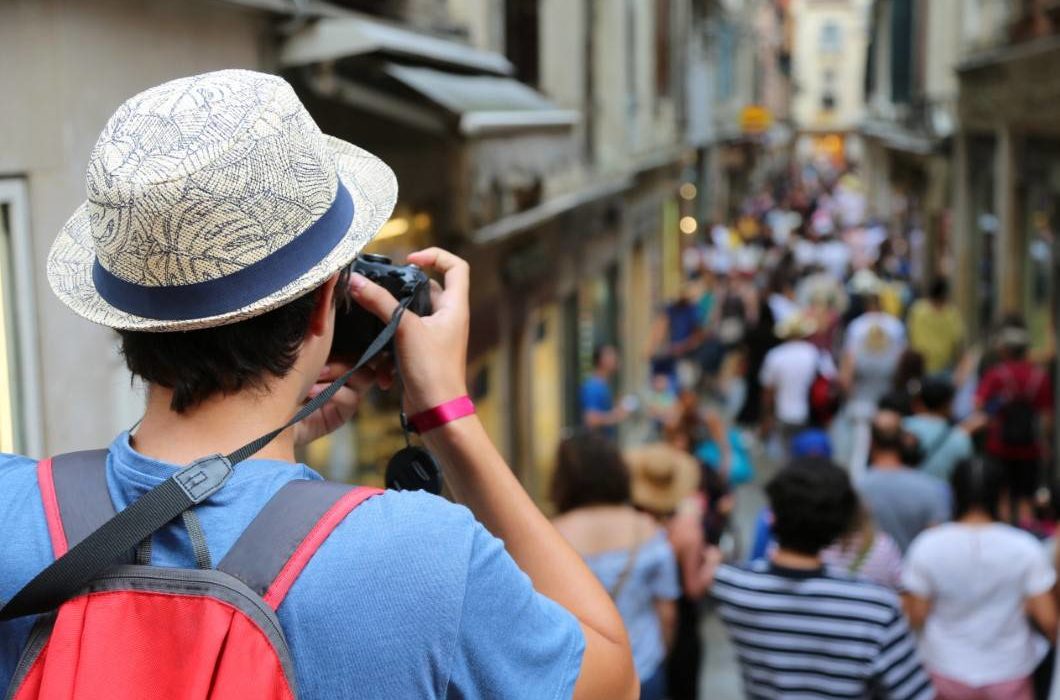
You might also like:
Tourists are a guarantee of income and employment, tourism generates an estimated ten percent of global economic output. But instead of welcoming tourists, some cities are now actively fighting against tourism and resisting over-tourism.
Over-tourism greatly diminishes the charm of travel destinations, bringing locals up against the tourists in a situation that creates unbalance.
Lower fares, online travel portals and cheaper accommodation options such as home sharing have made travel affordable but have also boosted this so-called phenomenon of over-tourism. The World Tourism Organization registered a new record for 2017, with 1.3 billion international trips – twice as many as in 2000. For 2018, another rise is expected.
Nowhere do they know over-tourism better than in Venice. Every year, up to 35 million tourists come to the Italian city with 54,000 inhabitants, many arrive in cruise ships. After a few hours of sightseeing, they return home with no more than an espresso, not to mention they do not stay in the city hotels. Thus, Venice hardly benefits from the flood of day tourists.
As a result, first countermeasures have been taken. The St. Mark’s Square harbor has been closed for cruise ships docking, which now have to dock on the opposite side of the lagoon of the mainland, in the industrial district of Marghera.
In addition, since May of last year, the city has had the main roads leading to the sights blocked by the police if necessary. These may then be used only by holders of a specific tourist pass, all others are denied access.
In the near future a kind of entrance fee is to be raised. Daily tourists have to pay, depending upon season, 2.50 to 10 euro for the visit of the city. A similar regulation was approved by the Italian government at the end of December.
Dubrovnik, the Croatian city on the Adriatic, which is home to 44,000 inhabitants, welcomes over 10,000 cruise passengers with up to seven ships annually – in addition to just as many visitors who came by land.

To protect the World Heritage status of the Old Town, mayor Mato Frankovic wants to limit the number of cruise ships in 2019 to two per day. The shipping companies have not yet been officially informed. Therefore, it is questionable whether the limitation will take effect in the short term. At the same time, an app was developed that proposes visitors sightseeing alternatives to the old town walls of the travel destinations.
“Young people get drunk, puke, run around naked and pee in every garbage can,” said the Mayor of the Croatian holiday island Hvar, Rikardo Novak, in 2017. As a countermeasure, the island officials have now adopted a series of fines for recreational hooligans that can reach up to 600 euros.
And it has brought success. “We have imposed about 20 to 30 fines so far,” the mayor confirmed. “It was less about the punishment itself than about educating people.”
Amsterdam is yet another travel destination resisting over-tourism. Its red-light district and liberal cannabis policy make Amsterdam the destination of 18 million visitors per year, despite the city itself being home to 850,000 inhabitants. The city has been imposing a strict package of measures called “City in Balance” since 2016. Residents are now only allowed to rent their apartment on platforms such as Airbnb for a maximum of 30 days per year. In the meantime, no new hotels are being built and opening shops that offer tourist products is prohibited.

In addition, the city marketing team came up with the idea to rename the suburb Zandvoort to Amsterdam Beach, 30 kilometers west from the city center. The goal is to make it more attractive to visitors and relieve the city center.
The number of typical tourist amusements such as Segway tours or beer bikes are now prohibited. The tourism tax has doubled to seven percent. “There is no miracle weapon,” says Vera Al, spokeswoman for the deputy mayor. “But all these measures together make sure that the city will be worth living in the long term.”
Between 1996 and 2016, the number of visitors in Berlin almost quadrupled, to nearly 13 million. The problem is that virtually all tourists seek the center and the trendy districts.
In addition, apartments rented via sharing platforms are exacerbating the situation on the rental housing market. For this reason, since April 2018, people need a permit to rent their own home on Airbnb and second homes may be rented for a maximum of 90 days per year.
With a different approach, visitor flows are directed to the districts outside the city center. For this purpose, extra tourism agents were appointed. With the help of the app “Going Local Berlin”, tourists should become more familiar with the hidden charms of outlying districts such as Spandau or Marzahn-Hellersdorf
The Japanese term for over-tourism is “kango kogai”, which literally means “tourism pollution”. 2017 was the fifth year in a row in which more than 50 million tourists visited Kyoto, and most foreigners came from China. Residents complain about noise, congested transport, busy streets and full pubs.
As a countermeasure, some restaurants publish information on their homepage only in Japanese and hold space contingents for local guests.
Source: tourism-review.com



